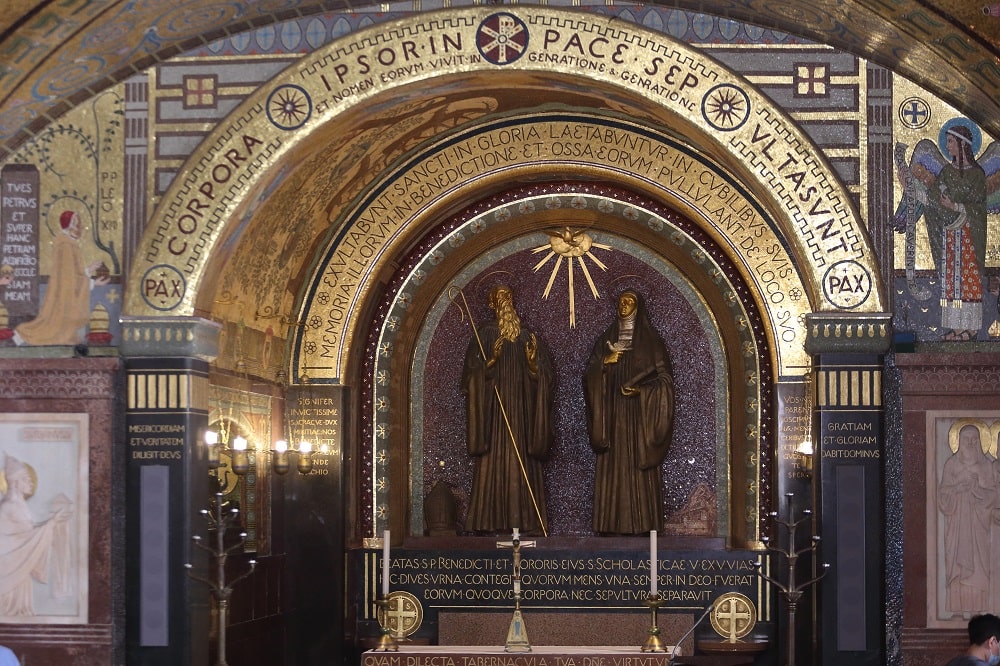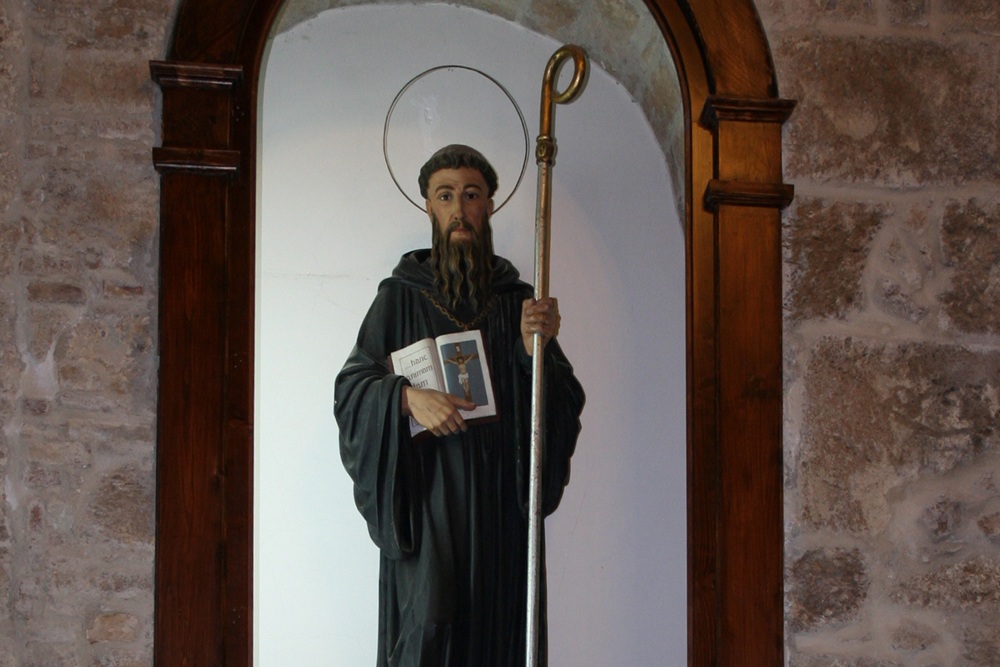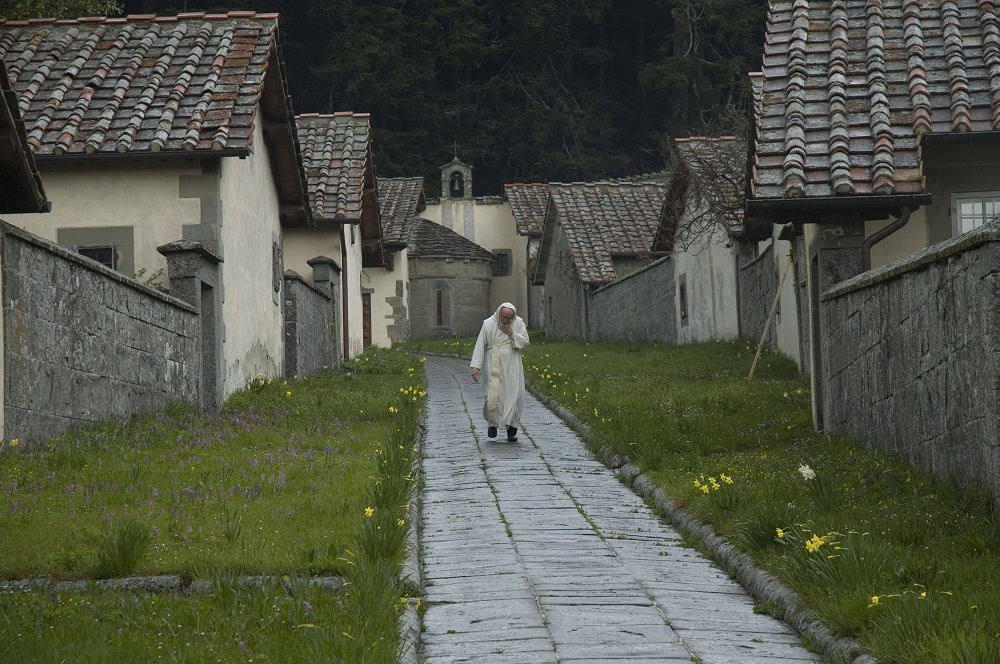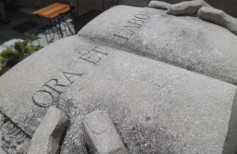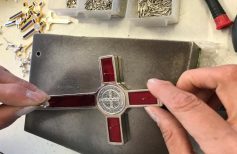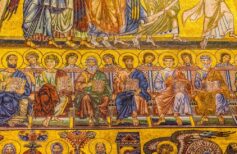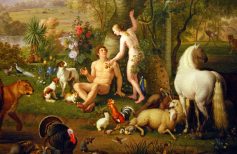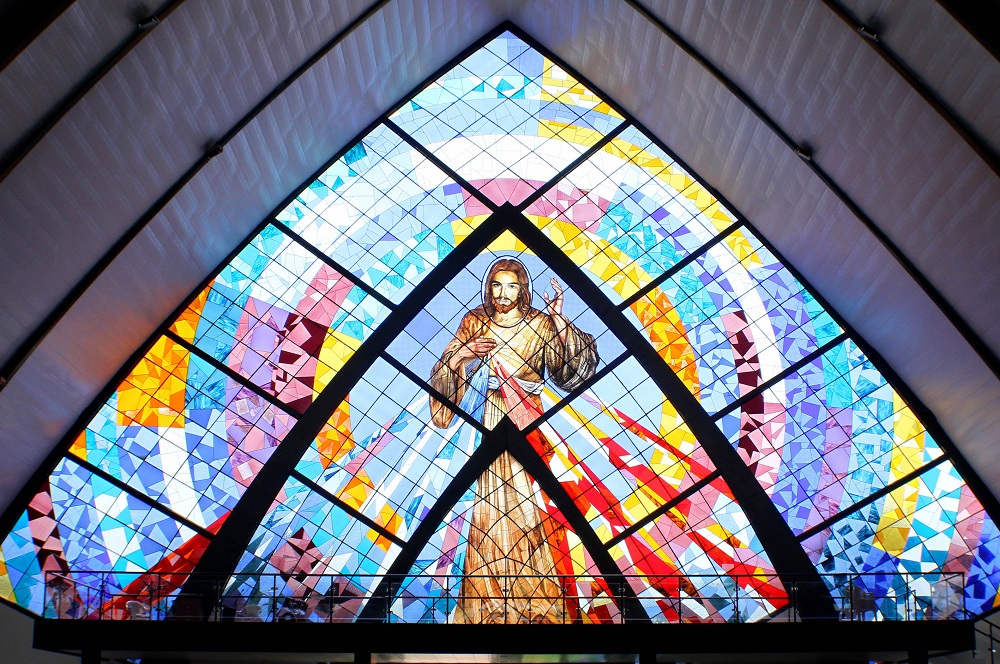On Feb. 10, the Church commemorates St. Scholastica, sister of St. Benedict of Norcia, patroness of Benedictine nuns and protector of women who have given birth. Here is her story of sororal love and faith.
Twin pairs have been known to be united by a deep bond that seems to originate while still in their mother’s womb. Even in pairs of heterozygotic twins this union verges on symbiosis in some cases, transcending time and space, and lasting for a lifetime. So it may have been for St. Benedict of Norcia and his twin sister St. Scholastica, who lived in the shadow of her more famous brother, embracing his Rule and becoming his docile instrument and enthusiastic supporter. Protectress of mothers in childbirth, Benedictine nuns, and children suffering from convulsions, she is celebrated on February 10 and venerated as a saint by the Catholic Church, the Orthodox Church, and the Anglican Church.

From the Dialogues of St. Gregory the Great we are offered some hints about the life of this remarkable woman, founder of the female branch of the Benedictine Order. The twins belonged to a family descended from the ancient Roman senatorial nobility. Their mother, Countess of Norcia, died giving birth to them, and their father Eutropius, Captain General of the Romans in the region of Norcia, wanted to send the two children, barely 12 years old, to Rome, to bring them closer to religion and initiate them into classical studies. Upset by the dissolute life in the city, both chose without delay to retire to a monastery. To do so they separated. Benedict became a hermit, retreating, as we know, first to Subiaco, then to Cassino. Scholastica entered a monastery near Norcia, where she took a vow of chastity and renounced earthly goods. She later joined her brother in Subiaco, and after he had founded the Abbey of Monte Cassino she built her own monastery at the foot of the mountain on which her brother’s stood, only 7 kilometers away. It was the monastery of Piumarola, and here she started the female branch of the Benedictine Order, the Benedictine nuns, who were also devout and faithful to the Rule of St. Benedict.
St. Benedict and St. Scholastica
The twins remained united throughout their lives. Although the path they took meant that they had to remain apart, despite living in two places so close together, the two met once a year in a small house halfway between their respective monasteries. Here Scholastica would break her vow of silence only to talk with her twin about God and pray with him. The last of these meetings took place on February 6, 547, and when their time together was coming to an end Scholastica, who was 62 years old, begged her brother to stay a little longer. Benedict refused, citing as his reason the Rule that urged him to return to the monastery and his cell, and departed, despite his sister’s tears. But after walking a short distance he and his people were surprised by a frightful storm and forced to turn back. St. Scholastica confessed that she prayed intensely to God to bring her brother back, and so the two stayed together while bad weather raged outside. That is why even today St. Scholastica is invoked to defend against lightning and to obtain rain. On February 10, Scholastica died. Benedict, learned the news of his sister’s death, which occurred three days after their last meeting, thanks to a divine sign: he saw a white dove rising toward heaven and understood that it was Scholastica’s soul leaving earth. He personally went to pick up his sister’s body and laid it in the tomb he had had prepared for himself, so that, as they had been together in the womb, they could be together in eternal rest.

The monastery of St. Scholastica in Subiaco.

East of Subiaco, and 510 meters above sea level, still stands the monastery of St. Scholastica, spared from earthquakes, ancient and modern invasions, and bombings. Many hermits lived and retired in prayer in this region, giving this valley the name holy valley. Subiaco’s only monastery until the end of the 12th century, under the name Monastery of St. Sylvester, it was later renamed Monastery of St. Benedict and St. Scholastica, and was later dedicated only to the saint. At the entrance to the structure, composed of buildings from different historical periods, stands the inscription Ora et Labora. Next to the present church, which dates back to 1700 and stands on the ruins of five earlier churches, is a bell tower from the 12th century, a golden age for the monastery, which at that time was also Italy’s first printing press, where books of inestimable value were printed that enriched the large library for centuries.

